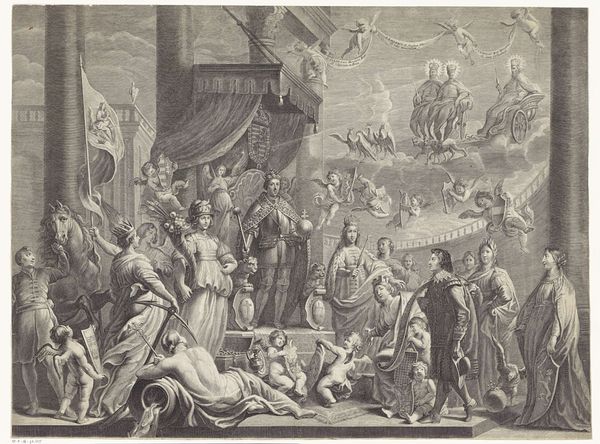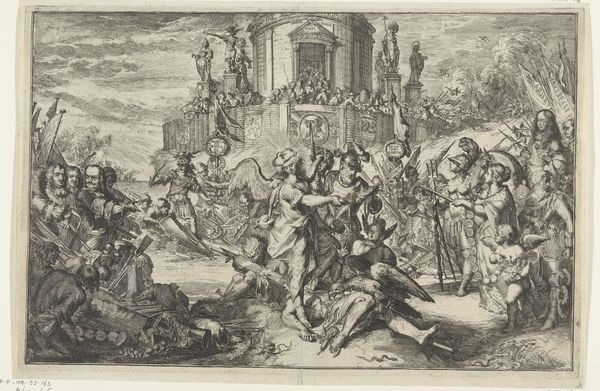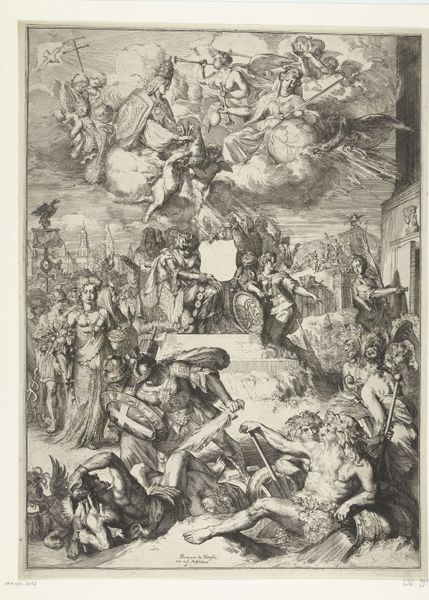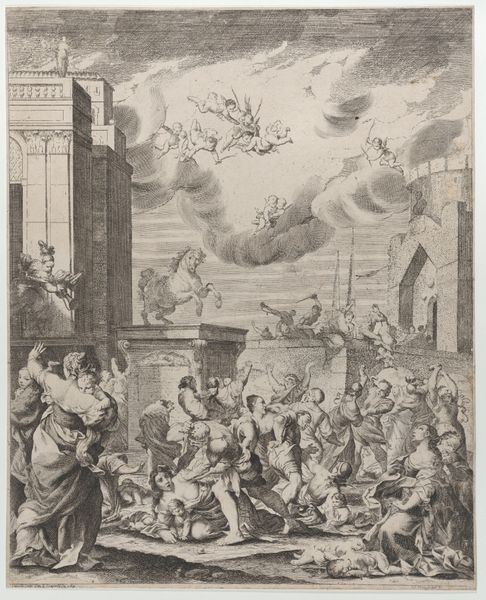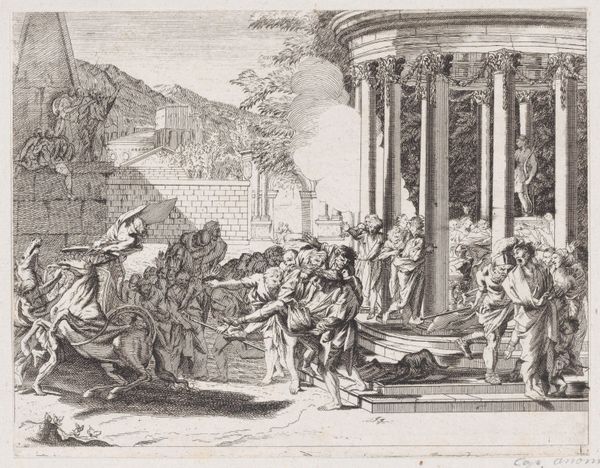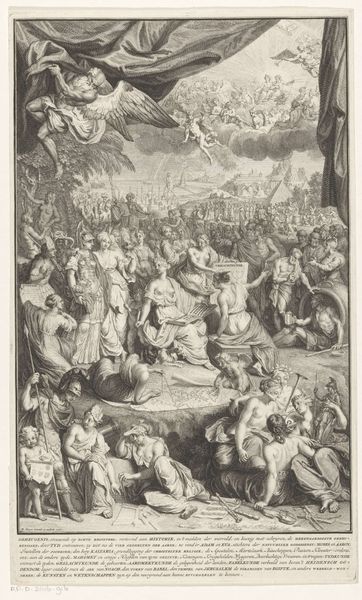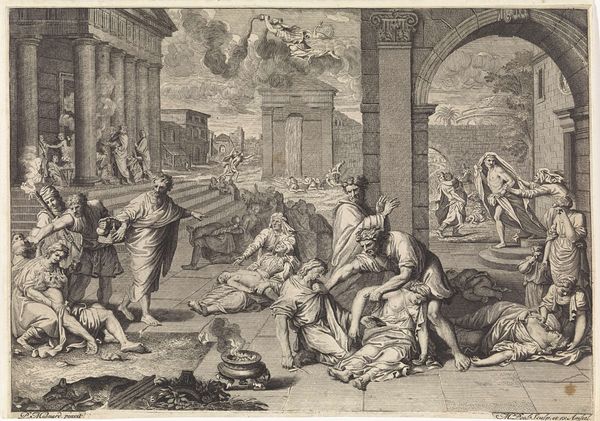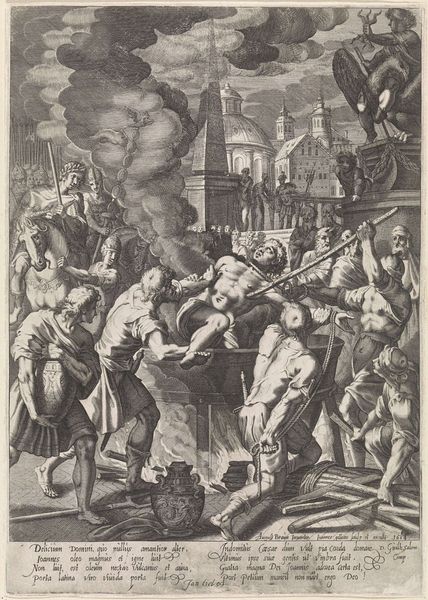
print, engraving
#
ink drawing
#
narrative-art
#
baroque
# print
#
genre-painting
#
history-painting
#
engraving
Dimensions: height 370 mm, width 509 mm
Copyright: Rijks Museum: Open Domain
Editor: This print, "Kindermoord te Betlehem," made between 1637 and 1671, depicts the Massacre of the Innocents. It’s so chaotic and violent. What do you see in this piece, especially considering its historical and cultural context? Curator: The depiction is indeed dramatic, typical of the Baroque style. But beyond the immediate visual impact, we need to consider the role these images played in the 17th century. This print would have circulated widely, carrying a potent religious and political message. It's not just about the biblical story; it reflects the anxieties and sociopolitical turmoil of the time, perhaps commenting on contemporary conflicts and power struggles. How do you think such imagery affected its viewers? Editor: It's hard to imagine the impact of witnessing something so graphic in an era without the constant barrage of images we experience today. Did these prints serve a specific purpose within religious or political discourse? Curator: Absolutely. Prints like these were powerful tools. They served as a form of visual propaganda, reinforcing religious beliefs and moral lessons but also potentially shaping public opinion on contemporary events. The brutal imagery was designed to evoke a strong emotional response and perhaps even legitimize certain actions or viewpoints within a complex sociopolitical landscape. Note how the artist blends classical architectural elements with this visceral scene of violence. Editor: So the use of classical settings in a depiction of such a horrible event makes it palatable, perhaps? It links the idea of infanticide and barbarism with current structures and hierarchies? Curator: In a way, it does. And that makes it not just a religious lesson, but social critique, if subtle. Considering this, what's your take away on the modern viewing of the print? Editor: I think I’ll never see art in the same way now, knowing that even a seemingly historical image can be charged with the politics and anxieties of its own time. Curator: Exactly! It highlights that art is never created in a vacuum and that by learning to question those works, we open a fascinating way of thinking about it and its function in the past, or present.
Comments
No comments
Be the first to comment and join the conversation on the ultimate creative platform.
